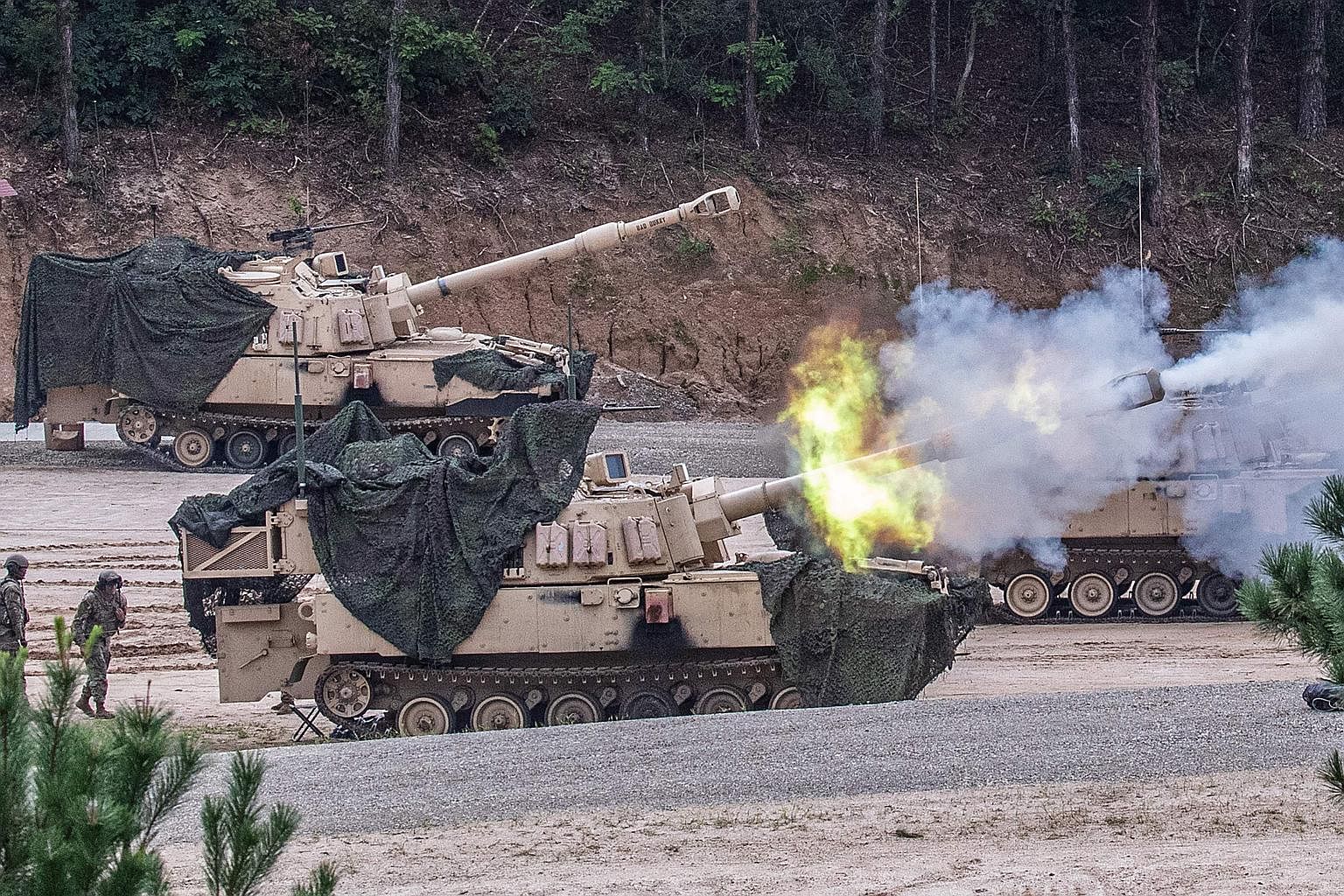POCHEON, SOUTH KOREA (REUTERS) - South Korea and the United States have vowed to step up joint military training to deter North Korea, but for residents outside the Rodriguez Live Fire Complex and other training grounds, that means more noise and possibly more security fears.
The complex north of Seoul, less than 30km from the heavily fortified border with North Korea, is one of the largest training ranges for the allies.
Windows rattled on Wednesday (Aug 31) as the allies staged one of their largest live-fire trainings in years, with howitzers and tanks blasting the hillsides in a simulated counter-attack against a hypothetical Northern onslaught.
Loud and sometimes dangerous military training has long been a fact of life in one of the world's geopolitical hotspots, but in an increasingly wealthy and crowded South Korea, some residents' patience has worn thin.
Mr Lee Ung-su has lived in Pocheon since his birth just a year after the 1950-1953 Korean War.
"At that time, we were poor, so even if a tank came next to me and fired, we just picked up the shell and sold it to make a living," he said.
"Now that we have a high standard of living I've come to protest against noise and various environmental problems."
His garden is decorated with spent artillery shells and machine gun casings that fell outside the training range decades ago.
Such stray shells are much less common now, but safety remains a top concern, Mr Lee said, citing past instances of errant fire from helicopter gunships that destroyed some houses.
"All the tiles on the roof of my house were damaged," he said. "So now I've made a new iron roof."
US Army Colonel Brandon Anderson, who helped oversee Wednesday's drills, said the military is looking into the concerns, noting that they pause for a period to allow quiet testing hours at schools.
"We are finding different methods and timing, working with the local community," he said.

But Col Anderson said even local residents want the militaries to be ready to confront North Korean threats.
"Nothing says assurance like military training," he said. "And military training by its nature is loud, unfortunately."
Mr Lee and other residents interviewed by Reuters expressed understanding, but still held out hope the drills can be less disruptive.
"The sound is so loud that many people are afraid because they think it's actually a war," said Mr Han Ung-su.
"We hope to reduce the noise or come up with measures to prevent damage to the residents."

Residents near other training areas have also protested, including in Pohang on the east coast, who filed a petition demanding relocation or closure of a firing range there.
Of particular concern are Apache attack helicopters, which had been banned from firing at the Pocheon range since 2019 over the complaints.
They were briefly allowed this year, but a US spokesman told Reuters that was a one-off event and the helicopters still cannot regularly use the range.
"If the helicopters come back, then we're going to go up to the shooting range and protest," Mr Lee said. "We'll climb the mountain in the shooting range, carry the flag, and become a human shield."


